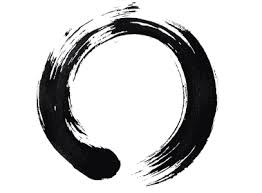
Are you holding on too tightly? Are you really trying hard at work, and yet it feels like you’re not moving forward? Do you have donors on your caseload that shouldn’t be on there, but you can’t let go? Or, have you tried hard enough to reach out to them?
Over the years Richard and I have had the great pleasure of working with dozens of major gift officers and development professionals, each person unique with his or her own specific set of talents and gifts. Yet, as humans, we all strive to understand and live in the tension between letting go and holding on to something too tightly.
The late author and psychologist, M. Scott Peck, who wrote the famous book, The Road Less Travelled, was always trying to help others address this tension in their lives. One of the ways he did this was by taking clients golfing.
Peck was just an average golfer himself, yet when he spent time considering the game, he realized what a metaphor for life it really was. Soon, corporate executives, politicians, managers, religious leaders and just ordinary people were signing up to play a round of golf with him.
I know, it’s seems odd, doesn’t it? But, if you’ve ever played the game of golf, you know how incredibly difficult it is, just like life. Both can be extremely challenging. What is interesting about golf, though, is that often, to become successful, you have to do the opposite of what you might think you have to do.
If you notice, often an average golfer who is teeing up the ball is basically trying to kill it with his club. “Grip and Rip” is the saying. Yet, in golf, the harder you grip the club and swing it, the worse you’ll be. If you go on YouTube right now and watch funny golf swings, you’ll see what I mean.
You can witness really strong athletes trying to swing a club so hard that they basically fall over and the ball just dribbles 10 yards. The key with golf is to hold on to the club with “just the right amount” of tension and allow yourself to swing freely, not “killing it.”
The results can be amazing. The ball can travel incredibly far and straight and you feel absolutely incredible. The pros can do this almost every time they swing the club. The rest of us… well, if we can do it just once a round, it keeps us coming back for more.
I wonder why?
What M. Scott Peck did for those who played with him was to teach them how golf was like life. Holding on too tightly results in terrible shots. Overthinking and not allowing yourself to clear your mind of daily struggles will land your ball in the water. Slowing down actually allows you to see more clearly and putt more accurately.
Gosh, I would love to have played a round with him.
After his clients played with him, none of them knew their scores, but they came away with a new understanding of life. It became far more clear how to balance the tension of living in the moment vs. thinking too far ahead, and what it meant to hold on too tightly vs. letting go and moving on.
When Richard and I start working with major gift officers and development professionals, many of them don’t know how to live in that tension. They have been struggling. We find many folks won’t let go of donors on their caseload and they wonder why their portfolio is not growing.
Others are really stubborn, believing that their way of cultivating a donor is the only way. They can’t change their approach… even when they see revenue declines year after year. Some MGOs have let donors go too quickly after only a few attempts at reaching them and they literally have a goldmine of donors they have cast off. That’s a classic case of not holding on tightly enough and allowing your club to go flying as you swing through.
The key to your work is knowing when to press and when to let go. You don’t have to take up golf to figure this out. But you do have to be “aware” of who you are and “where” you are in any given moment.
Can you allow yourself to learn new approaches? Are you able to take direction and management from others? Can you prune your portfolio so you can take on other donors who can help it grow? Do you understand how many times to approach a donor without being obnoxious? Can you slow down and get to know a donor so you’re able to honor him or her with the right asks?
The answers to these questions all require that you understand how to live in the tension of holding on and letting go. It’s not easy and it’s an ongoing process. You don’t wake up one day and say, “Hey, now I get it!” Rather, it’s a daily, steady and growing awareness of balancing this tension.
The result, though, of being aware of this tension, is that you will live and work in balance. Working and living in balance leads to professional and personal fulfillment… and it leads to joy!
Anyone want to play a round of golf?
Jeff
Search Blog Posts






0 Comments